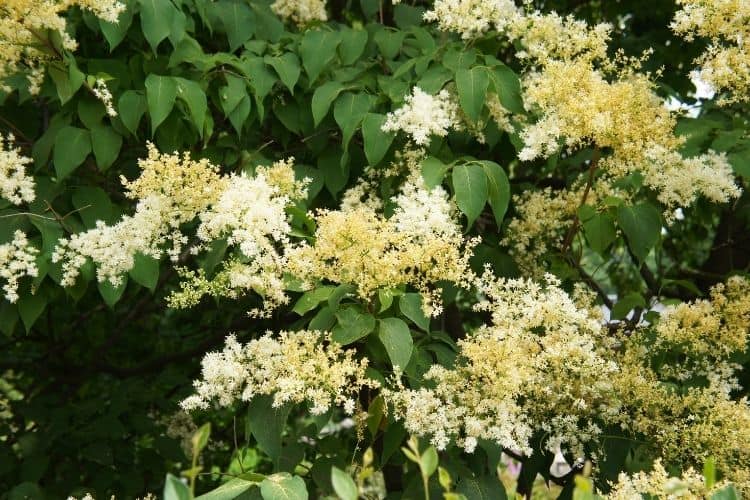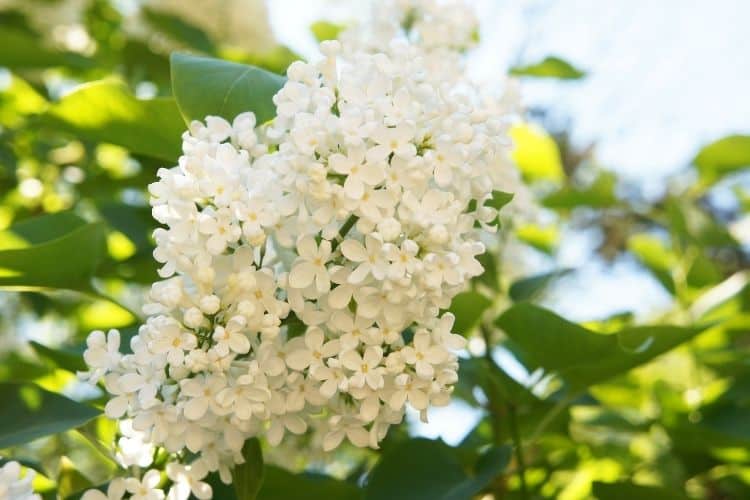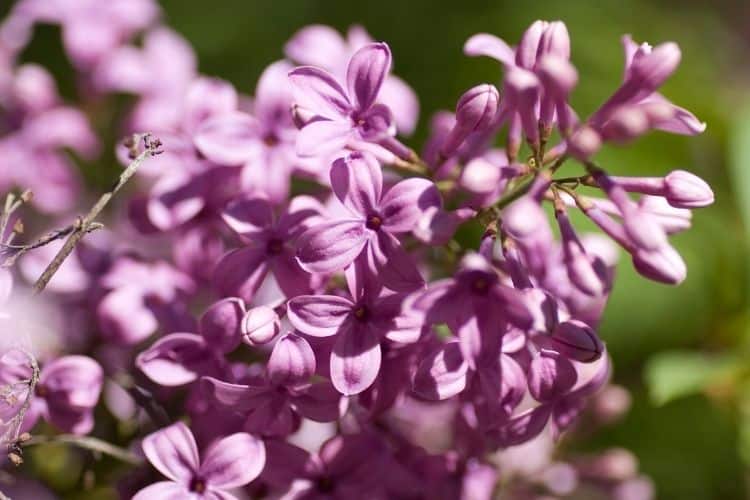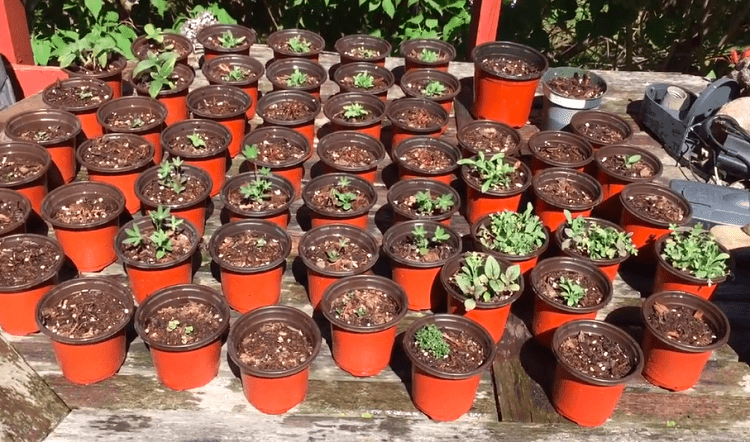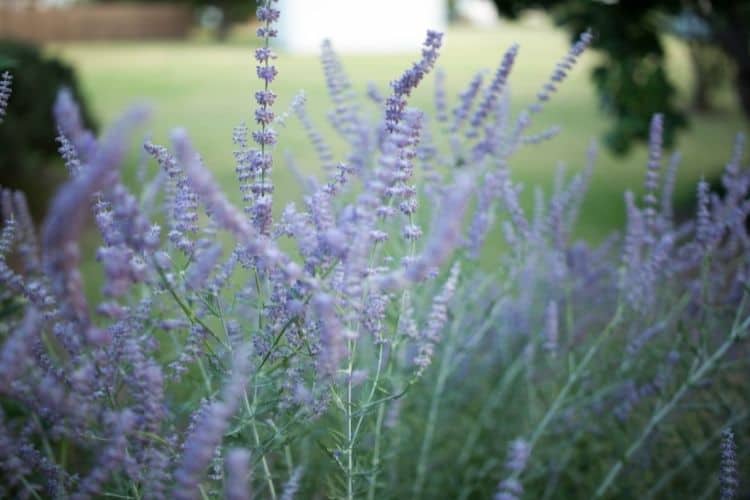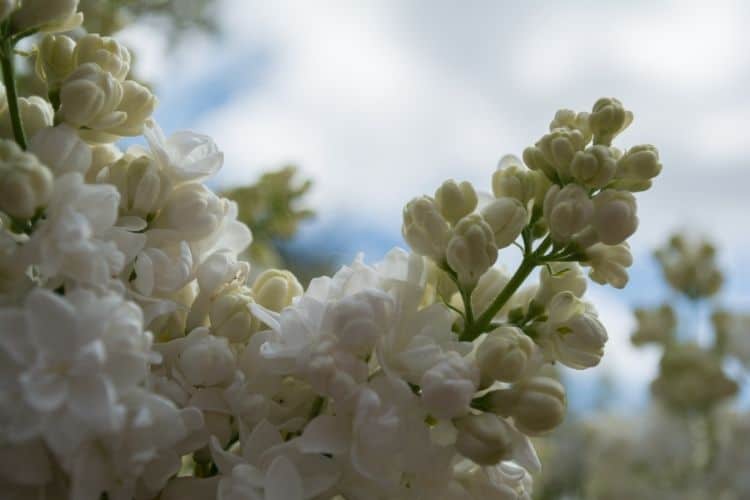- Cassia Tree (Cassia fistula): A Tropical Tree For Your Garden - January 27, 2022
- Camphor Tree (Cinnamomum Camphora) Info - November 18, 2021
- Japanese Lilac Tree: Why Is This Tree A Must Have For Your Garden? - November 7, 2021
Bare-branched trees providing glorious blooms of white, pink, and yellow are some of our favorite aspects of the arrival of spring.
In temperate and sub-tropical climates, gardeners cherish the early to the mid-spring period when flowering trees such as cherries, almonds, and plums bloom. But this glorious period does not last. But there is a solution to consider – Japanese lilac trees bloom when other trees are no longer in bloom.
If you want to continue that springtime feeling of flowering trees, consider planting at least one Japanese lilac tree, Syringa reticulata.
How to Identify a Japanese Lilac Tree
Funny enough, the scientific name of the Japanese Lilac Tree, Syringa reticulata, does not account for the beautiful and abundant white blossom heads that grace the tree in early summer. The genus name, Syringa, comes from the Greek syrinx, which translates to “pipe,” referring to the tree’s hollow stems. The species name, reticulata, means “netted” or “net-veined,” which comes from the venation of the leaves.
Japanese lilac belongs to the olive or Oleaceae family, which also includes privet and forsythia. In this same family is the olive tree, which bears the long-cherished olive oil. There are about 30 species of trees and shrubs native to Europe and Asia within the species Syringa.
Growth Habit and Form
Interestingly, the Japanese tree lilac is not always a single trunk “tree.” Sometimes you can get it as a multi-stemmed shrub. Nevertheless, both plants have a graceful oval to rounded crown. Japanese lilacs can grow to a height of about 20 to 30 feet (9 meters) with a spread of 15 to 20 feet (4.5 to 6 meters).
Leaves
The leaves are 3 to 6 inches (7.6 to 15.2 cm) long and half as wide. They are simple, opposite, entire, and ovate with a long-tapered tip. Regarding color, leaves are medium to dark green and slightly fuzzy underneath.
Unfortunately, Japanese lilac will not provide you with an impressive autumn show. In the autumn, the leaves turn pale greenish-brown before the tree goes dormant for the winter.
Flowers
The most identifiable feature of the Japanese tree lilac is its large clusters of creamy-white fragrant flowers. Each cluster is impressive feet long (31 cm) and 10 inches (25 cm) wide. The blooms usually last for about two weeks, blooming around late spring to late early summer.
Fruits
After blooming, the tree presents a brown, warty, dry capsule measuring ¾ inch-long (0.75 cm). Each capsule has two winged seeds, appearing in large clusters that remain on the tree through winter. Eventually, the capsules break open, and the wind scatters the seeds.
Bark
Bark and stems appear glossy reddish-brown and have numerous lenticels. This attractive bark resembles that of cherry trees. After the leaves drop in the autumn, the bark and branches provide some visual interest.
Tree Lilacs Versus Common Lilacs
Lilacs belong to the genus Syringa. Some are trees, and some are shrubs (Syringa vulgaris). Trees are typically known as Japanese lilacs, or Japanese tree lilacs, Syringa reticulata; here are some differences between Japanese lilac trees and common lilac shrubs:
Bloom Time
Common lilac shrubs bloom late in spring, while Japanese lilac trees flower in early summer. You can plant both to have a sequence of blooms over a few weeks.
Flower Scent
Common lilacs possibly have the most fragrant flowers in the world. But tree lilacs have a sweeter smell. For some, tree lilacs smell overly sweet.
Bark
Japanese lilacs win this category with their pretty reddish-brown bark studded with lighter lines (“lenticels”). On the other hand, common lilacs’ bark leaves much to be desired as they are plain gray.
Where Does Japanese Lilac Tree Grow
The Japanese lilac tree is native to northern Japan, hence its name. It will grow well in most place temperate regions of the world.
Specifically, in North America, Japanese tree lilac strives in zones 3 to 7. Further south than zone 7, the hot and humid conditions of the American south will cause too much stress for this plant. To check your local growing zone, go on the USDA website here.
Uses of Japanese Lilac
Japanese tree lilac is an ornamental landscape tree. It does not serve any notable edible or industrial purposes. But that’s fine; its beauty and fragrance are useful enough. You can plant Japanese tree lilac as a specimen on tree lawns, street trees, or groupings. Growing in a group is a good idea because it is not a large tree; it has a more dramatic visual impact if planted in multiples.
Japanese Lilac Varieties
There are three main sub-species of Japanese lilac, with very subtle and possible unnoticeable differences. You have the following:
• Japanese lilac tree (Syringa reticulata subsp. reticulata)
• Chinese lilac tree (Syringa reticulata subsp. pekinensis)
• Amur lilac tree (Syringa reticulata subsp. amurensis)
Beyond the sub-species, you can find the following cultivars. Cultivars bear more blooms than the species plant, so it may be better for you to consider buying a cultivar variety instead. Below is a list of some fantastic cultivars:
‘Ivory Silk’
This is possibly the most popular among the cultivars. It grows to a maximum height of 25 feet (7.6 meters), shorter than the species plant. This cultivar is a good choice for group planting.
‘Signature’
About a week or two after ‘Ivory Silk,’ you can plant the two together to extend the blooming period.
‘Summer Snow’
This is a small tree (20 feet high or 6 meters) that is very tolerant of pollution. Therefore, it makes a great urban tree. Consider planting it along the street.
‘Chantilly Lace’
This cultivar has variegated foliage. The leaves have creamy yellow margins. With attractive foliage, this cultivar continues to make a statement beyond the short blooming period.
‘Ivory Pillar’
Unlike other cultivars, this grows in a columnar form of about 25 feet high (7.6 meters) and 15 feet wide (4.6 meters). You should plant this one in groups as well for a strong visual impact. Or, plant multiples of them along the street side.
How to Grow Japanese Lilac Tree from Seed
Japanese Lilac Tree Growing Conditions
In its native habitat, northern Japan, the tree grows on cliffs and in the scrub on limestone.
Regarding soil, you must provide your Japanese lilac with well-drained soil. When you plant, ensure that you mix the soil with compost to make to enhance its richness. Furthermore, the compost helps to loosen the soil, which promotes proper moisture flow. This procedure is vital if your soil is clay-rich.
When to Plant Japanese Lilac Tree
Plant Japanese lilac trees in late winter or early spring when they are dormant. Alternatively, you can also plant in late fall. During dormancy, transplanted and newly planted trees are less sensitive to the acclimation challenges that new plants face. Also, the weather is generally less extreme during those periods.
How to Plant Japanese Lilac Tree
You may have already bought a Japanese lilac tree, or you are excited to get one. In most cases, you will get the tree either as a root ball wrapped in burlap or potted.
If the tree already comes with some soil around the roots, take a look at these steps.
- Step 1: Find a sunny spot; your tree will be the happiest basking in the sunlight.
- Step 2: Prepare a planting hole in nutrient-rich and well-drained soil. It should be twice the width and half as deep as the root ball.
- Step 3: Till the soil on the sides and floor to loosen it. Doing so will help your Japanese lilac’s root have an easier time penetrating the soil, improving drainage.
- Step 4: Add to the planting hole compost or well-aged manure.
- Step 5: Place the plants in the prepared hole. Ensure that they are planted at the same depth as their nursery pot or root ball.
- Step 6: Put compost in the gaps between the ground and the root ball. Tamp down the soil with your hands to get rid of any large air pockets.
- Step 7: Water the soil generously and thoroughly.
- Step 8: Add an organic material mulch around the tree’s base, allowing better moisture retention.
Note, if you are planting multiple Japanese lilac trees in the same spot, give them a spacing of 15 to 25 feet.
Japanese Lilac Tree Water Requirements
Your Japanese lilacs need the ground to be evenly moist. But ensure that it drains well; soggy soil will rot the roots. If you are concerned that your soil dries out quickly, then put down mulch to help with water retention. In addition, compost also helps here. If there is enough water retention, then you won’t have to water your Japanese lilacs as often.
Japanese Lilac Tree Sun Requirements
Japanese tree lilac will be most happy if you plant it in full sun. It needs as much sunlight as possible for maximum flowering. Though you can grow it in partial sun, it will produce fewer flowers.
Best Japanese Lilac Tree Fertilizer
First of all, the best fertilizer is any good quality balanced fertilizer. But does your tree need to be fertilized, and how often?
Soil fertility is another crucial variable for getting the best out of your Japanese lilacs. Though it can live in soil with an average level of fertility, it is better to optimize the nutrient profile.
So, here are some fertilizing tips:
- Mix soil amendments into the ground every spring, without fail.
- Purchase a balanced fertilizer if you find it needs an extra boost. Apply the fertilizer in the spring. Carefully follow the instructions on the bag because if you overfeed it, the plant will burn.
- After applying, hose down the soil so that the fertilizer goes down into the roots. Leaving it on the surface reduces its usefulness.
Best Japanese Lilac Tree Companion Plantings
Plant in Groups
Here is an idea for you, some of the best companion plants for Japanese lilac trees are other Japanese lilac trees as some cultivars have different blooming periods.
You can go ahead and plant ‘Ivory Silk’ and ‘Signature’ together as both are small trees that look great together. But, beyond size, consider bloom time. ‘Signature’ blooms after ‘Ivory Silk,’ which means you can extend the amount of time Japanese lilac provides their fragrant and plentiful flowers.
Other Plants
Naturally, there are many choices for companion plants. It is usually up to your taste and preferences. But here are some plants that look good with Japanese lilac trees.
- Emerald Cedar (Thuja occidentalis ‘Smaragd’): A dense multi-stemmed evergreen shrub growing 15 feet high and 4 feet wide. It has an upright and columnar growth habit. They are usually planted in line closely together, forming a beautiful green border.
- Russian Sage (Perovskia atriplicifolia): Plant this beautiful perennial under your Japanese lilac tree in a garden bed as a groundcover. It has silvery gray, fragrant foliage and lavender-purple flowers. It requires little care and maintenance.
- Daylilies (Hemerocallis): These perennials come in vibrant colors and are a lovely groundcover for any Japanese lilac tree. They start to bloom around the same time and will continue to bloom throughout the summer.
Japanese Lilac Tree Diseases and Common Problems
Japanese tree lilac is the most trouble-free of the lilacs. Few diseases and insects bother it. In addition, it is more resistant to powdery mildew diseases than common shrub lilacs. It also is pollution resistant. Though it is suspectable to scale and borers, this is unlikely to cause much stress to you. Overall, Japanese tree lilac is an impressive and low-maintenance addition to your yard or street side.
Treatments and Maintenance
As with most flowering trees and shrubs, pruning is essential and time-sensitive. Here are some maintenance pruning tips that can help you along:
- Remove damaged, dead, or diseased limbs as soon as you spot them. This procedure is vital to prevent pest or disease infestations.
- For mature trees, prune out some of the limbs to improve air circulation. You should pay special attention to taking off any crossing and/or rubbing against each other.
However, maintenance pruning sometimes is not enough. It would help if you pruned Japanese lilac to get the classic tree form. If left on its own to grow, it will become multi-branched instead of growing as a single trunk. It would help if you pruned off low branches in early spring to help expose as much trunk as you wish to see. Do this pruning early in its life to train your Japanese lilac to become a tree instead of a large shrub.
Where to Buy Japanese Lilac Tree Saplings Online
So, you are convinced that you want this beautiful and fragrant tree in your garden. If you have the space, buying a few may be better than one, as it would offer a lovely visual impact. To view or order Japanese lilac saplings, click on the names of some good online nurseries below.
- The Tree Store: Offers a broad selection of trees with free shipping. They have a wide variety of Japanese lilac cultivars.
- Direct Gardening: This website is a go-to for any flowering plant – trees, bulbs, shrubs, etc. You can find almost any time of flowering plant there.
- Nature Hills: This online nursery is the largest in America and has an excellent reputation among gardeners.
FAQs
Answer: Japanese lilac is hardy to Zone 3. That is cold! If you live in the frigid Midwest or lower Canada, you don’t have to worry about your Japanese lilac surviving the winter.
Answer: Yes! For this reason, many cities around the world plant them in city parks and along the street.
Answer: Japanese lilac is a small tree. Feel free to plant one on your patio. A small cultivar like ‘Summer Snow’ is an excellent pick for small spaces.
Answer: The benefit of Japanese lilac is that it is relatively low maintenance. It is a difficult one to kill for the lazy gardener. Compared to common lilacs, very few diseases and pests bother this tree.
Final Thoughts
The Japanese lilac tree gives far more than it takes.
This gorgeous late-bloomer provides flowers after other flowering trees. It has abundant clusters of fragrant white flowers that charm and delight. Also, it doesn’t require much space, and you can even plant them in groups. Best of all, it does not require much care, and most pests and diseases stay away from it.
It is very cold, hardy, surviving the frigid winters of Zone 3 (Upper Midwest and Lower Canada). However, it will not tolerate the hot and humid summers of the American south. Japanese lilac tree is a flowering tree that you should definitely include in your garden. There are way more benefits than drawbacks.
====
Research Citations:
- https://www.gardeningknowhow.com/ornamental/shrubs/lilac/japanese-lilac-information.htm
- https://bernheim.org/learn/trees-plants/bernheim-select-urban-trees/japanese-tree-lilac/
- https://www.thespruce.com/japanese-lilac-tree-care-and-growing-guide-4589076
- https://www.mygardenlife.com/plant-library/1161/syringa/reticulata
- https://www.gardeningknowhow.com/ornamental/flowers/russian-sage-flowers/russian-sage-care.htm


